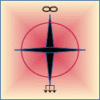The Evolution of Resource Utilization
Introduction: The Lifeblood of Progress
Resources have been the foundation of survival and societal advancement throughout history. From the nutrients absorbed by single-celled organisms to the global resource networks of the Digital Age, humanity’s ability to identify, acquire, and manage resources has been a defining thread in the development of civilization. This chapter explores the historical trajectory of resource utilization, tracing its evolution across eras.
Single Cell Era: The Dawn of Resource Utilization
The earliest forms of life relied on the simplest methods to acquire resources:
Nutrient Absorption: Single-celled organisms absorbed dissolved nutrients and minerals directly from their surrounding environments to sustain basic metabolic processes.
Dissolved Minerals: Essential minerals in the environment provided the foundation for biological functions and cellular development.
This era represents the primordial beginnings of resource utilization, where life adapted to extract sustenance from its immediate surroundings.
Primitive Era: Foraging and Hunting
As multicellular life evolved and early humans emerged, resource acquisition became more active and diverse:
Foraging: Early humans relied on gathering edible plants, fruits, and nuts to meet their nutritional needs.
Hunting: The development of basic tools and techniques allowed for the hunting of animals, providing a more reliable and protein-rich food source.
These practices marked humanity’s first steps toward mastering their environment, laying the groundwork for later innovations.
Awareness Era: Primitive Agriculture and Geological Exploration
With increasing cognitive capabilities, humans began to systematically exploit and manage resources:
Primitive Agriculture: Early farming practices, including planting and harvesting crops, emerged as humans began to cultivate their food sources.
Geological Awareness: Observations of the land and its natural formations led to the identification of minerals and other valuable resources.
This era introduced a sense of intentionality and foresight in resource utilization, reflecting the growing awareness of resource potential
Medieval Era: Expanding Resource Management
The Medieval period saw significant advancements in the extraction, preservation, and application of resources:
Preservation of Knowledge: Techniques for documenting and transmitting knowledge, including resource management practices, became crucial.
Mineral Extraction: Mining methods for coal and metals improved, fueling early technological advancements.
Coal: Coal emerged as a vital energy resource, supporting heating and rudimentary industrial activities.
Metals and Metallurgy: The refinement of metals enabled stronger tools and weapons, advancing agriculture and warfare.
Alchemy: Although largely symbolic, alchemy represented early experimental approaches to resource transformation.
Astronomy: Observations of celestial bodies began to influence agricultural and navigational resource planning.
The Medieval Era set the stage for more systematic and large-scale resource exploitation.
Agricultural Age: The Domestication of Life
The Agricultural Age saw humanity’s growing ability to control and optimize natural resources:
Domestication of Life: Animals and plants were bred for specific purposes, maximizing productivity and utility.
Fertilizer: The development of natural fertilizers enhanced soil fertility, boosting agricultural yields.
These innovations provided a stable foundation for the growth of populations and civilizations.
Enlightenment Era: Efficiency in Agriculture
The Enlightenment brought a scientific perspective to resource management:
Efficient Agriculture: Advances in crop rotation, irrigation, and pest control techniques increased agricultural output and sustainability.
This era reflects a shift toward systematic and empirical approaches to resource utilization, driven by the pursuit of knowledge and innovation.
Industrial Age: Mechanized Resource Extraction
The Industrial Revolution marked a dramatic transformation in the scale and methods of resource exploitation:
Mechanized Resource Extraction: Machines replaced manual labor in mining, forestry, and agriculture, enabling the extraction and processing of resources on an unprecedented scale.
The industrialization of resource management fueled rapid economic growth and technological innovation, but also introduced challenges of resource depletion and environmental impact.
Digital Age: Global Resource Networks
In the modern Digital Age, resource management has become interconnected and technologically advanced:
Global Resource Networks: Complex global supply chains ensure the efficient distribution of resources across the world, powered by data and advanced logistics.
This era represents the culmination of humanity’s efforts to harness and manage resources, characterized by collaboration and technological sophistication.
